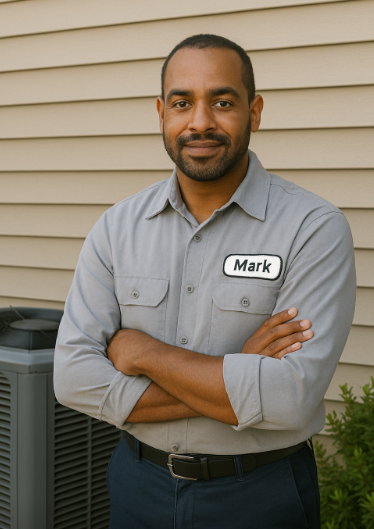Mark Callahan here. If you’re reading this, you’ve probably asked yourself questions like: “What size air conditioner for 1500 square feet do I need?” or “Will a 3 ton air conditioner cool how many square feet?” Choosing the right air conditioning unit is one of the most important decisions you can make for comfort and efficiency.
In this blog, I’ll break down everything you need to know about sizing your AC, from 1500 sq ft AC units to systems for larger spaces, and explain why a properly matched system like the Goodman 3‑Ton 14.5 SEER2 R‑32 bundle is often the best choice.
Understanding AC Sizing
Air conditioner sizing is measured in tons. One ton equals 12,000 BTUs (British Thermal Units) per hour. The general rule of thumb for a typical home is:
-
1 ton of AC for every 500–600 sq ft of living space
-
For a 1,500 sq ft home, a 3-ton system is usually ideal
-
For a 2,500 sq ft home, you may need a 4–5 ton system, depending on insulation, windows, and climate
Many homeowners make the mistake of focusing on cost rather than size, leading to an undersized or oversized AC unit. Both scenarios can cause discomfort and increased energy bills.
For a detailed guide on sizing, see Energy.gov AC sizing recommendations.
Why a 3 Ton AC Unit Works for a 1,500 sq ft Home
A 3 ton air conditioner typically provides 36,000 BTUs, which is sufficient for a 1,500 sq ft house with average insulation and standard ceiling heights. A properly sized unit will:
-
Cool the space efficiently
-
Maintain humidity levels
-
Operate with fewer cycles, extending the lifespan
When you’re looking for an AC unit for 1500 sq ft home or an air conditioner for 1500 sq ft house, a matched system like the Goodman bundle ensures that the indoor coil and condenser work together, maximizing efficiency.
AC for 2500 sq ft Homes
For larger homes, say air conditioner for 2500 sq ft house, you’ll need a larger system, typically 4–5 tons. Proper sizing is critical:
-
Too small: Struggles to cool, runs constantly, increases wear
-
Too large: Short cycles, higher energy usage, poor humidity control
Professional sizing using a Manual J load calculation is recommended. It considers insulation, windows, ceiling height, and local climate. HVAC School offers a comprehensive guide to Manual J calculations for homeowners and contractors.
Key Factors Affecting Cooling Capacity
Even for a 1500 sq ft AC unit, other factors influence performance:
-
Insulation: Poor insulation increases cooling demand
-
Windows: Large or south-facing windows may require additional capacity
-
Ceiling height: Standard 8-foot ceilings vs. vaulted ceilings
-
Appliances & occupancy: Kitchens and multiple occupants generate heat
-
Climate: Hot, humid regions may need more capacity than cooler areas
By considering these factors, you can avoid the pitfalls of buying the wrong 1500 square foot house AC unit.
Why a Matched System Matters
Many homeowners look for individual components like a condenser or coil, but mismatched systems reduce efficiency. The Goodman 3‑Ton 14.5 SEER2 R‑32 bundle provides:
-
Factory-matched components
-
Optimal airflow and refrigerant charge
-
Higher SEER2 efficiency rating
-
Warranty coverage for peace of mind
Mismatched systems can result in short cycling, increased energy bills, and even premature failure.
Energy Efficiency Considerations
The SEER (Seasonal Energy Efficiency Ratio) rating measures AC efficiency. The Goodman 3‑Ton bundle has a 14.5 SEER2 rating, meaning:
-
Lower energy bills compared to older systems
-
Less environmental impact
-
Comfortable cooling for 1,500–2,500 sq ft homes
Energy.gov provides tips for maximizing AC efficiency including proper sizing and maintenance.
Indoor Comfort and Air Quality
A properly sized air conditioner for 1500 sq ft home also ensures:
-
Even temperature distribution
-
Improved humidity control
-
Enhanced indoor air quality with proper filtration
Small systems or undersized units may leave rooms hot, damp, or uncomfortable.
Common Questions
Q: How do I know if my home needs a 3 ton or 4 ton AC?
A: Consider your square footage, insulation, windows, and local climate. A professional Manual J calculation is the most accurate method.
Q: Can a 3 ton AC unit cool a 1500 sq ft house efficiently?
A: Yes, for average construction and insulation.
Q: What about a 1500 sq ft AC unit for a house with high ceilings or many windows?
A: You may need slightly more capacity or enhanced airflow solutions.
Q: How does an AC unit for 2500 sq ft home compare?
A: Larger homes generally require 4–5 ton units, depending on other factors like insulation and local climate.
Installation Tips
Proper installation ensures your 1500 square foot house AC unit works as intended:
-
Level the condenser outside
-
Clear 24–36 inches of space around the unit
-
Ensure proper refrigerant charge and airflow
-
Use insulated ductwork to prevent energy loss
For professional guidance, see HVAC Talk’s installation tips.
Maintenance for Longevity
Regular maintenance keeps your AC running efficiently:
-
Replace or clean filters monthly
-
Inspect ducts for leaks
-
Schedule annual professional checkups
-
Clean outdoor condenser coils
A well-maintained air conditioner for 1500 sq ft house can last 15–20 years.
Conclusion
Choosing the right AC unit for your home is about more than price. Whether you’re looking for a 3 ton air conditioner for a 1500 sq ft home or an AC unit for 2500 sq ft home, proper sizing, matched components, and professional installation are critical.
The Goodman 3‑Ton 14.5 SEER2 R‑32 bundle offers a reliable, energy-efficient solution for mid-sized homes, ensuring comfort, longevity, and peace of mind.







